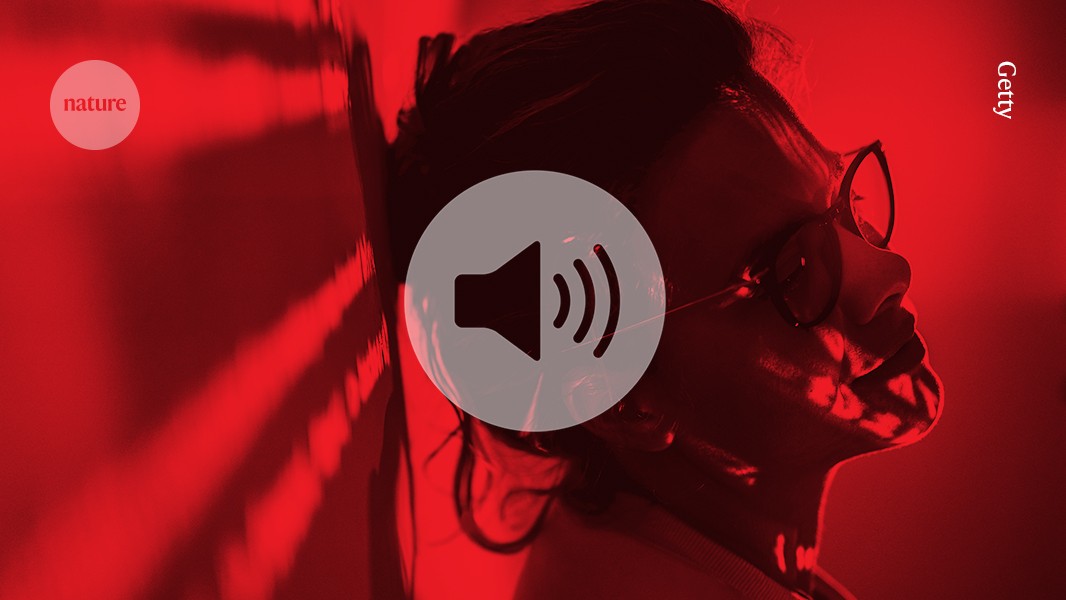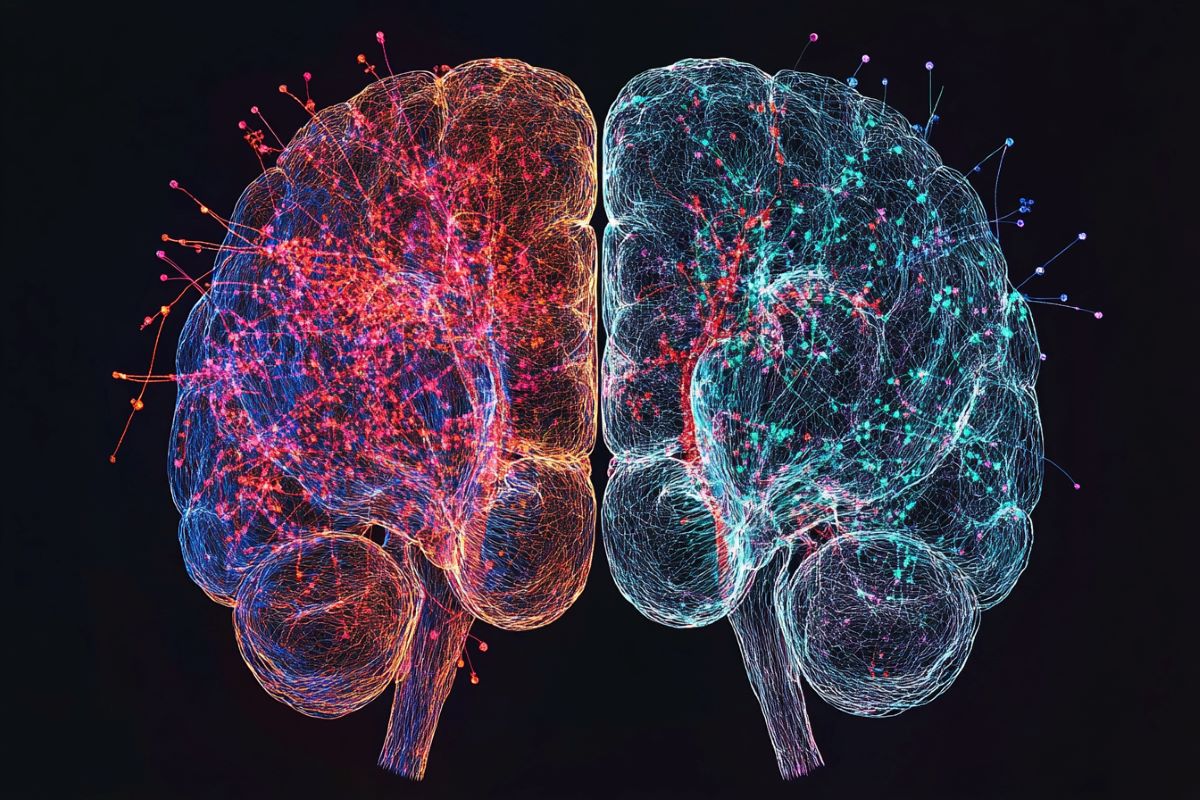Physical and emotional abuse with internet addiction and anxiety as a mediator and physical activity as a moderator

Ferrara, P. et al. Physical, psychological and social impact of school violence on children. Ital. J. Pediatr. 45 (1), 76 (2019).
Google Scholar
Liu, J. et al. The relationship between child maltreatment and social anxiety: a meta-analysis. J. Affect. Disord. 329, 157–167 (2023).
Google Scholar
World Health Organization. Child maltreatment [EB/OL]. (2022-09-19) [2024-09-09].
Chen, L. et al. Gender measurement equivalence of the child abuse questionnaire among Chinese college students. J. Jining Med. Coll. 46 (3), 168–173 (2023).
Google Scholar
Hillis, S. et al. Global Prevalence of Past-year Violence Against Children: A Systematic Review and Minimum Estimates. Pediatrics, 137(3): p. e20154079. [6]. Chi, X., Internet Addiction and Depression in Chinese Adolescents: A Moderated Mediation Model. Front Psychiatry, 2019. 10: p. 816. (2016).
Cruz, D. et al. Developmental trauma: conceptual framework, associated risks and comorbidities, and evaluation and treatment. Front. Psychiatry. 13, 800687 (2022).
Google Scholar
Wang, Y. et al. Effects of school connectedness on the relationship between child maltreatment and child aggressive behavior: a mediation analysis. Child. Abuse Negl. 136, 106021 (2023).
Google Scholar
Hughes, K. et al. The effect of multiple adverse childhood experiences on health: a systematic review and meta-analysis. Lancet Public. Health. 2 (8), e356–e366 (2017).
Google Scholar
Serafini, G. et al. The relationship between Childhood Maltreatment and Non-suicidal Self-Injury: a systematic review. Front. Psychiatry. 8, 149 (2017).
Google Scholar
Young, J. C. & Widom, C. S. Long-term effects of child abuse and neglect on emotion processing in adulthood. Child. Abuse Negl. 38 (8), 1369–1381 (2014).
Google Scholar
McCrory, E. et al. Neurocognitive adaptation and Mental Health Vulnerability following maltreatment: the role of Social Functioning. Child. Maltreat. 24 (4), 435–451 (2019).
Google Scholar
Moog, N. K. et al. Intergenerational transmission of the effects of maternal exposure to childhood maltreatment in the USA: a retrospective cohort study. Lancet Public. Health. 8 (3), e226–e237 (2023).
Google Scholar
Dvir, Y. et al. Childhood maltreatment, emotional dysregulation, and psychiatric comorbidities. Harv. Rev. Psychiatry. 22 (3), 149–161 (2014).
Google Scholar
Wang, H. et al. How sleep duration mediated childhood trauma and internet addiction of the vocational college population in urban areas of south China. Front. Psychiatry. 13, 1088172 (2022).
Google Scholar
Xiao, Y. et al. The impact of childhood maltreatment and neglect on adverse psychological and behavioral outcomes in adolescents. Chin. J. Sch. Health. 37 (1), 46–49 (2016).
Google Scholar
Yu, G. & Li, S. Crisis and turning point: the Impact of Childhood Abuse on Adolescent Mental Health and coping strategies. J. Beijing Normal Univ. (Soc Sci) ;(01):5–15. (2021).
Li, W. et al. Diagnostic criteria for problematic internet use among U.S. University students: a mixed-methods evaluation. PLoS One. 11 (1), e0145981 (2016).
Google Scholar
Goslar, M. et al. Treatments for internet addiction, sex addiction and compulsive buying: a meta-analysis. J. Behav. Addict. 9 (1), 14–43 (2020).
Google Scholar
Zhang, Z. H. et al. [The relationship between emotional, physical abuse and internet addiction disorder among middle school students]. Zhonghua Liu Xing Bing Xue Za Zhi. 30 (2), 115–118 (2009).
Google Scholar
Janoffbulman, R. Shattered Assumptions: Towards a new Psychology of Trauma (Living with Terror, 1992).
Javakhishvili, M. & Spatz, W. C. Childhood maltreatment, sleep disturbances, and anxiety and depression: a prospective Longitudinal Investigation. J. Appl. Dev. Psychol., 77. (2021).
Springer, K. W. et al. Long-term physical and mental health consequences of childhood physical abuse: results from a large population-based sample of men and women. Child. Abuse Negl. 31 (5), 517–530 (2007).
Google Scholar
Negriff, S. ACEs are not equal: examining the relative impact of household dysfunction versus childhood maltreatment on mental health in adolescence. Soc. Sci. Med. 245, 112696 (2020).
Google Scholar
Kascakova, N. et al. The Unholy Trinity: Childhood Trauma, Adulthood anxiety, and Long-Term Pain. Int. J. Environ. Res. Public. Health, 17(2). (2020).
Fu, H. et al. Reported prevalence of childhood maltreatment among Chinese college students: a systematic review and meta-analysis. PLoS One. 13 (10), e0205808 (2018).
Google Scholar
Guo, L. et al. Childhood maltreatment predicts subsequent anxiety symptoms among Chinese adolescents: the role of the tendency of coping styles. Transl Psychiatry. 11 (1), 340 (2021).
Google Scholar
Liu, Y. et al. Anxiety, inhibitory control, physical activity, and internet addiction in Chinese adolescents: a moderated mediation model. BMC Pediatr. 24 (1), 663 (2024).
Google Scholar
Xue, Y. et al. Associations between internet addiction and psychological problems among adolescents: description and possible explanations. Front. Psychol. 14, 1097331 (2023).
Google Scholar
Li, G. et al. Relationship between anxiety, depression, sex, obesity, and internet addiction in Chinese adolescents: a short-term longitudinal study. Addict. Behav. 90, 421–427 (2019).
Google Scholar
Kandola, A. & Stubbs, B. Exercise and anxiety. Adv. Exp. Med. Biol. 1228, 345–352 (2020).
Google Scholar
Zhang, G., Feng, W., Zhao, L., Zhao, X., & Li, T. The association between physical activity, self-efficacy, stress self-management and mental health among adolescents. Sci. Rep. 14, 5488 (2024).
Artandi, M. K. & Stewart, R. W. The Outpatient Physical Examination. Med. Clin. North. Am. 102 (3), 465–473 (2018).
Google Scholar
Kandola, A. et al. Moving to beat anxiety: epidemiology and therapeutic issues with physical activity for anxiety. Curr. Psychiatry Rep. 20 (8), 63 (2018).
Google Scholar
Carek, P. J., Laibstain, S. E. & Carek, S. M. Exercise for the treatment of depression and anxiety. Int. J. Psychiatry Med. 41 (1), 15–28 (2011).
Google Scholar
Liu, Y. et al. The relationship between physical activity and internet addiction among adolescents in western China: a chain mediating model of anxiety and inhibitory control. Psychol. Health Med. 29 (9), 1602–1618 (2024).
Google Scholar
Gyasi, R. M. et al. Emotional and physical-related experiences as potential mechanisms linking physical activity and happiness: evidence from the Ghana Aging, Health, Psychological Well-being, and Health-seeking Behavior Study. Arch. Psychiatr Nurs. 42, 113–121 (2023).
Google Scholar
Zhang, J. & Dong, B. L. Emotional abuse and adolescent Exercise persistence: the multiple mediation of emotional self-control and perceived satisfaction of Exercise Psychological needs. J. Tianjin Univ. Sport. 32 (03), 269–276 (2017).
Google Scholar
Meinck, F. et al. Psychometric properties of the adverse childhood experiences abuse short form (ACE-ASF) among Romanian high school students. Child. Abuse Negl. 72, 326–337 (2017).
Google Scholar
Chegeni, M. et al. Validity and reliability of the Persian version of the adverse childhood experiences abuse short form. J. Educ. Health Promot. 9, 140 (2020).
Google Scholar
Lovibond, P. F. & Lovibond, S. H. The structure of negative emotional states: comparison of the Depression anxiety stress scales (DASS) with the Beck Depression and anxiety inventories. Behav. Res. Ther. 33, 335–343 (1995).
Gong, X. et al. Validation report of the depression-anxiety-stress scales (DASS-21) simplified Chinese version in Chinese college students. Chin. J. Clin. Psychol. 18 (04), 443–446 (2010).
Google Scholar
Wei, Q. The Relationship between Negative Emotions and Problematic Social Networking site use among College Students: A Moderated Mediation Model [D] (Central China Normal University, 2018).
Add Health. California Healthy Kids Survey (Physical Health & Nutirtion Module, 2016).
Waasdorp, T. E. et al. Health-related risks for involvement in bullying among Middle and High School Youth. J. Child Fam. stud. 28 (9), 2606–2617 (2019).
Google Scholar
Kim, H. Y. Statistical notes for clinical researchers: assessing normal distribution (2) using skewness and kurtosis. Restor. Dent. Endod. 38 (1), 52–54 (2013).
Google Scholar
Podsakoff, P. M. et al. Common method biases in behavioral research: a critical review of the literature and recommended remedies. J. Appl. Psychol. 88 (5), 879–903 (2003).
Google Scholar
Brand, M. et al. The Interaction of person-affect-cognition-execution (I-PACE) model for addictive behaviors: Update, generalization to addictive behaviors beyond internet-use disorders, and specification of the process character of addictive behaviors. Neurosci. Biobehav Rev. 104, 1–10 (2019).
Google Scholar
Brand, M. et al. Integrating psychological and neurobiological considerations regarding the development and maintenance of specific internet-use disorders: an Interaction of person-affect-cognition-execution (I-PACE) model. Neurosci. Biobehav Rev. 71, 252–266 (2016).
Google Scholar
Bérubé, A. et al. Emotion recognition in adults with a history of Childhood Maltreatment: a systematic review. Trauma. Violence Abuse. 24 (1), 278–294 (2023).
Google Scholar
Dannlowski, U. et al. Childhood maltreatment is associated with an automatic negative emotion processing bias in the amygdala. Hum. Brain Mapp. 34 (11), 2899–2909 (2013).
Google Scholar
Fan, T. et al. Prevalence and associated factors of internet addiction among Chinese adolescents: association with childhood trauma. Front. Public. Health. 11, 1172109 (2023).
Google Scholar
Ying, W. et al. Identifying clinical risk factors correlated with addictive features of non-suicidal self-injury among a consecutive psychiatric outpatient sample of adolescents and young adults. Eur. Arch. Psychiatry Clin. Neurosci. 274 (2), 291–300 (2024).
Google Scholar
Wang, D. et al. The mediating effect of family health on the relationship between health literacy and mental health: a national cross-sectional survey in China. Int. J. Soc. Psychiatry. 69 (6), 1490–1500 (2023).
Google Scholar
Li, X., Tu, L. & Jiang, X. Childhood maltreatment affects depression and anxiety: the mediating role of benign envy and malicious envy. Front. Psychiatry. 13, 924795 (2022).
Google Scholar
Zhang, M. et al. Personality traits as possible mediators in the relationship between childhood trauma and depressive symptoms in Chinese adolescents. J. Psychiatr Res. 103, 150–155 (2018).
Google Scholar
Choi, K. W. & Sikkema, K. J. Childhood maltreatment and Perinatal Mood and anxiety disorders: a systematic review. Trauma. Violence Abuse. 17 (5), 427–453 (2016).
Google Scholar
Wiss, D. A. et al. Association between Childhood Maltreatment and depressive and anxiety symptoms among men who have sex with men in Los Angeles. J. Urban Health. 100 (2), 327–340 (2023).
Google Scholar
Hammad, M. A., Al-Otaibi, M. N. & Awed, H. S. Child maltreatment among deaf and hard-of-hearing adolescent students: associations with depression and anxiety. Front. Psychol. 15, 1287741 (2024).
Google Scholar
Lee, H., Kim, Y. & Terry, J. Adverse childhood experiences (ACEs) on mental disorders in young adulthood: latent classes and community violence exposure. Prev. Med. 134, 106039 (2020).
Google Scholar
Leisman, G., Moustafa, A. A. & Shafir, T. Thinking, walking, talking: Integratory Motor and cognitive brain function. Front. Public. Health. 4, 94 (2016).
Google Scholar
Xu, H. et al. Emotional abuse and depressive symptoms among the adolescents: the mediation effect of social anxiety and the moderation effect of physical activity. Front. Public. Health. 11, 1138813 (2023).
Google Scholar
Tang, Y. C. Exercise as an effective treatment for anxiety. China Sci. Dly. : 002. (2021).
Wang, S. M. & Bu, H. B. The impact of Physical Exercise on adolescents’ Social-Emotional competence: the serial mediation of Social Support and Psychological Resilience. Res. Sport Sci. 37 (06), 24–33 (2023).
Google Scholar
Ma, M. K. & Cheng, F. The relationship between Internet Addiction and Physical Exercise in Post-90s College students [J]. Educ. Vocat., (02): 188–189. (2015).
Li, S. et al. Exercise-based interventions for internet addiction: neurobiological and neuropsychological evidence. Front. Psychol. 11, 1296 (2020).
Google Scholar
Deng Wencai. A comparison of internet addictive and sports addictive behaviors of college students, (2003).
Zhihao, D. et al. The influence of physical activity on internet addiction among Chinese college students: the mediating role of self-esteem and the moderating role of gender. BMC Public. Health. 24 (1), 935 (2024).
Google Scholar
Pascoe, M. et al. Physical Activity and Exercise in Youth Mental Health Promotion: A Scoping Review. Bmj Open Sport Exerc. Med. 6, e677 (2020).
Demenech, L. M. et al. Internet addiction and depressive symptoms: a dose-response effect mediated by levels of physical activity. Trends Psychiatry Psychother. 45, e20210279 (2023).
Google Scholar
link







:max_bytes(150000):strip_icc()/6440442-542d8674072440f2b10e8da6f806af11.jpg)